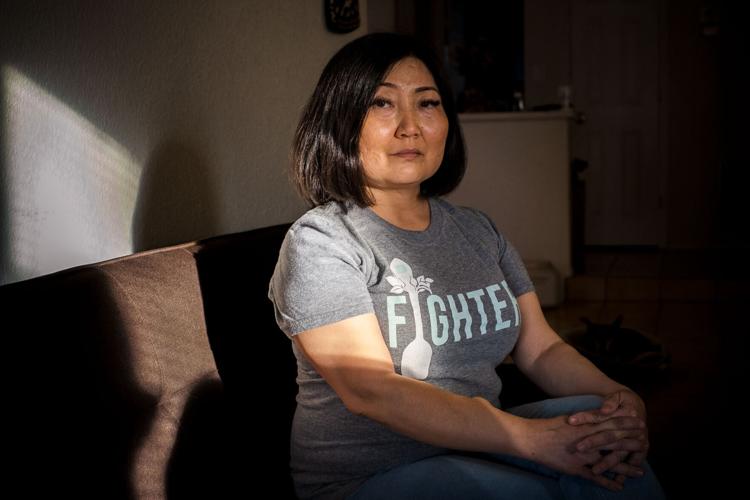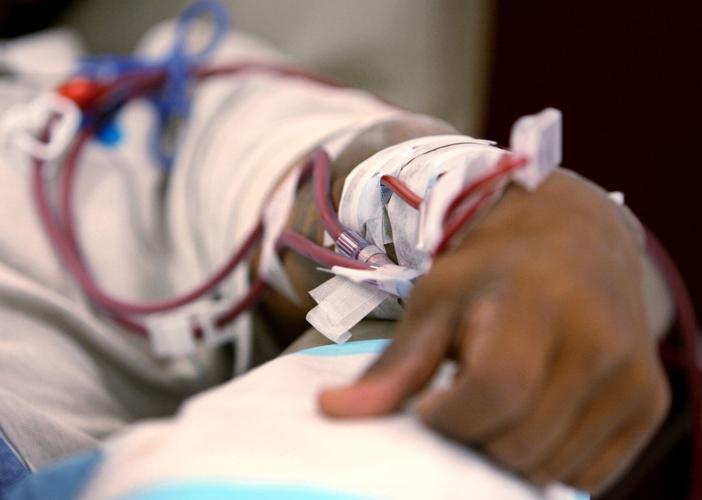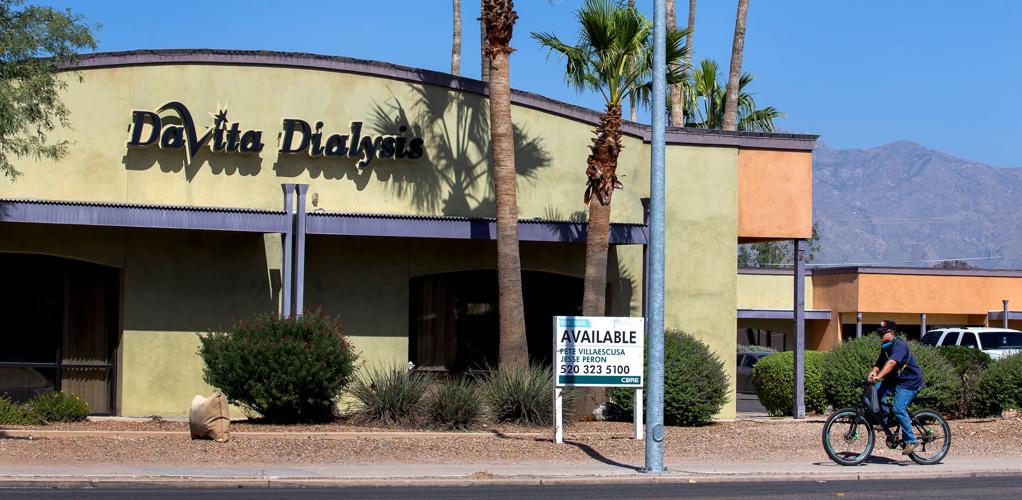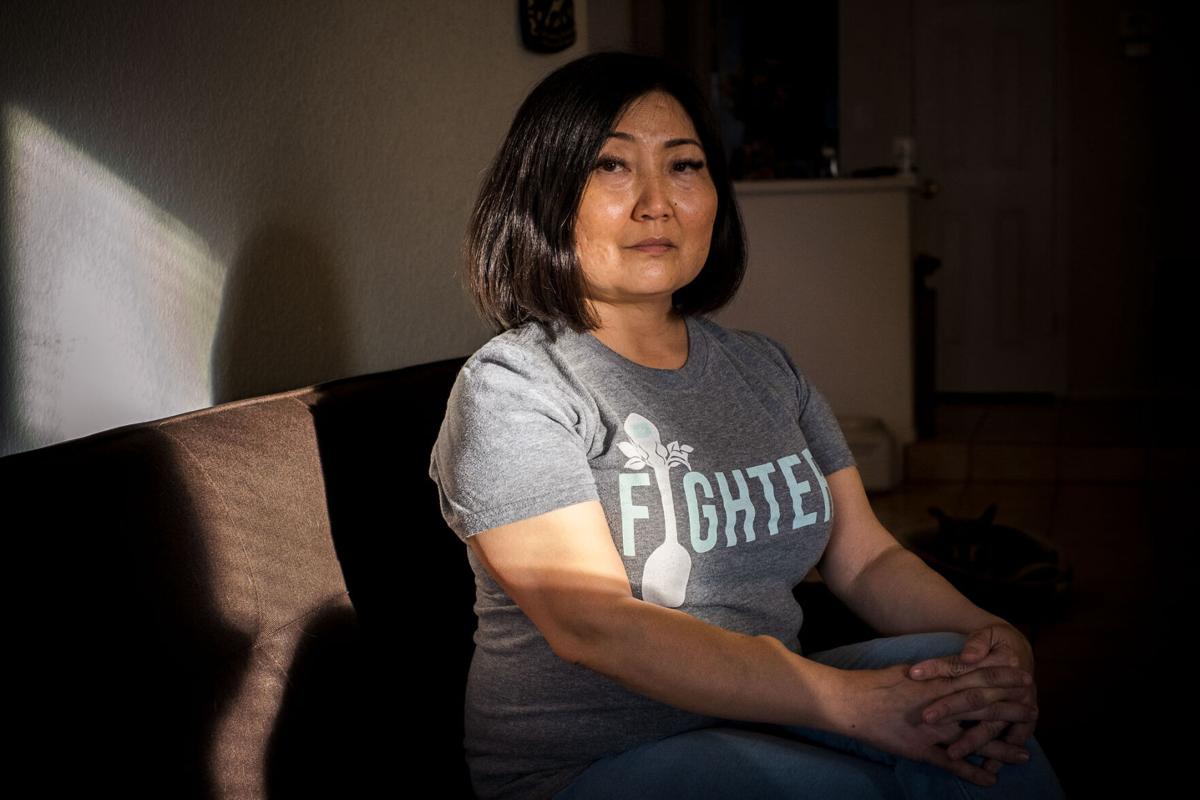Dried blood, dust and grime found encrusted on 21 out of 25 dialysis stations at the Fresenius Kidney Care East Tucson dialysis clinic.
Improperly disinfected dialysis stations and catheter hubs, which provide access to a patient’s bloodstream, identified repeatedly at DaVita Desert Mountain Dialysis Center in Scottsdale.
Failure to follow a doctor’s treatment orders for two separate patients, leading to the potential for “increased mortality” at Fresenius Kidney Care Central Phoenix.
Since 2019, nearly three-quarters of Arizona’s 130 outpatient dialysis clinics were cited for lapses in protocols designed to keep patients safe, an AZCIR analysis of state inspection data shows. Some facilities are repeat offenders, with recurring infection control and safety violations dating back years.
Such deficiencies are concerning at dialysis clinics because treatment requires a port with direct access to a person’s bloodstream, making patients particularly vulnerable to life-threatening infections as they typically visit a clinic three times a week for four hours at a time.
End-stage renal disease, often the result of chronic kidney disease from diabetes, congenital kidney issues or hypertension, means a person’s kidneys no longer function well enough to filter waste and fluid from blood on their own. For these patients, treatment is a matter of life or death: A kidney transplant or ongoing dialysis treatment is needed for survival.
“Your life changes in a blink of an eye, and I think that can be really traumatic,” former dialysis patient Sachi Kuwahara said of transitioning to the treatment. This stress, she said, makes it hard for patients to proactively approach problems they may see at a clinic.
The Arizona Department of Health Services, the agency responsible for inspecting dialysis clinics, said it has done its part to consistently inspect and issue citations, at times levying fines up to $30,000 for repeat problems. But records obtained by AZCIR show that dialysis companies can negotiate those fines down by an order of magnitude, at times by hundreds of thousands of dollars.
Records also reveal that the size of the fine does not always match the severity of the citation. Fines of between $250 and $1,250 were levied against clinics in seven instances after “actual harm” to patients occurred.
The nationwide medical staffing and supply shortages from COVID-19 have also reached dialysis clinics, further compounding the risks to patients. Experts are calling the lack of resources critical as the now 2-year-old pandemic is straining the outpatient dialysis system.
“The lack of dialysis care in the state right now during the pandemic is a significant issue,” said Colby Bower, the former assistant director of public health licensing services at the Arizona Department of Health Services, who left the agency in early 2022. “Hospitals are having to keep patients longer because they can’t get them into an outpatient dialysis center because they have no staff.”
Mark Canavan, a 48-year-old from Surprise who has been on dialysis in Arizona since 2019, said he has noticed a change in his care since the pandemic started.
The process of going to outpatient dialysis even before the pandemic brought about “profound exhaustion,” stress and extreme medical risks, he said. Now, it’s gotten worse.
“There is no question that there has been a deleterious effect on myself and my fellow patients,” Canavan said. Despite the “almost heroic” efforts of dialysis staff at his clinic, he said he fears “the level of care that we once received may never return.”

Chronic kidney disease affects an estimated 37 million people in the U.S., or roughly 15% of the population. Nationwide, nearly 500,000 people require dialysis multiple times a week.
People 65 and older make up the largest proportion of those with kidney disease, and research shows the condition disproportionately impacts people of color: Black people are almost four times as likely to have kidney failure as white people in the U.S., and about 14% of Hispanic people in the U.S. suffer from some form of chronic kidney disease.
In Arizona, there are more than 17,000 people with end-stage renal disease, with roughly 60% of them seeking treatment among the state’s 130 Medicare-certified outpatient clinics. While dialysis patients tend to follow the state’s demographic breakdown, Native American patients are disproportionately represented when compared to their share of the state’s population.
Kuwahara, the former dialysis patient who moved to Arizona in 2017 to have a better chance for a kidney transplant, experienced first-hand the challenges patients can face in Arizona clinics.
The risks and stress of dialysis are something she has dealt with since she was young. Kuwahara was born with a kidney disease called focal segmental glomerulosclerosis, which damages the kidneys’ ability to filter waste from blood and can cause kidney failure.
“When I was born, one of my kidneys was already not functioning, and then the other one was barely functioning. And at the age of 6, my kidneys completely failed,” she said. She had her first kidney transplant from a cadaver at age 9, but she needed another transplant 23 years later.
Kuwahara said she immediately noticed a difference in treatment protocols at Phoenix clinics after moving here from California.
First, she said, a clinic doctor took her off medication that was helping her. After switching facilities, she said a tech at that clinic “wasn’t really following the safety protocol” after she noticed him letting the tip of the needle touch other surfaces —which she felt was an infection risk.
Her next clinic, though, made 2018 “the hardest year of my life in terms of being on dialysis.”
At U.S. Renal Care Northeast Phoenix, Kuwahara said she encountered issues from staff not changing their gloves between patients to ignoring machine safety alarms during treatments. Staffers were also condescending and verbally abusive to her, she said.
One staff member “would make fun of me when they were putting the needles in,” because she looked away, Kuwahara said. She filed complaints with the clinic administrator and the End Stage Renal Disease Network, which coordinates between facilities and the federal government.
A representative from U.S. Renal Care said over email that officials were “unable to provide specific comment on this person’s alleged experience in 2018” and are committed to patient safety and high quality care.
According to ADHS records, U.S. Renal Care Northeast Phoenix received citations for infection control problems, among other issues, during state inspections in December 2019 and February 2021.
“Back and forth” fine negotiations
Dialysis centers must be certified by the state and the Centers for Medicare and Medicaid Services. ADHS conducts the related inspections in Arizona.
If deficiencies are found, ADHS requires a plan of correction from the facility. Citations can also lead to a recommended fine, with a maximum penalty of up to $500 per violation for each day it occurs.
An AZCIR review of enforcement action referrals showed that fines were recommended at 31 facilities from January 2019 through January 2022. In four separate instances involving clinics owned by DaVita Kidney Care and Fresenius Medical Care, multibillion-dollar companies that combined operate more than 85% of Arizona’s outpatient dialysis clinics, the fines were negotiated down to far lower amounts than inspectors initially recommended.
At Fresenius Kidney Care Arcadia in Phoenix, for example, inspectors recommended fines totaling $219,500 in March 2020, or $500 per day for 439 days, for a catheter infection control violation. The same violation was found during inspections in 2016, 2017, 2018 and again in 2020.
In correspondence obtained by AZCIR, lawyers representing the Arcadia clinic challenged the recommended fine in a 12-page letter to ADHS. The case was settled in March 2021, when the company agreed to pay a $30,000 fine, according to the state licensing database. The most recent federal inspection of the facility didn’t find any violations.

Blood filled tubes trace the length of a patient's arm during a 4-hour hemodialysis treatment at Fresenius Medical Care in Tucson.
DaVita Tucson East Dialysis had an infection control fine reduced to $20,000 from $193,000 in 2021. In Scottsdale, the DaVita Desert Mountain Dialysis Center had a $217,050 fine reduced to $6,000 for infection control and other violations in 2022. DaVita Power Road Dialysis in Mesa also had a recommended fine reduced from $83,750 to $5,000 this year, after inspectors found improperly disinfected catheters.
Arizona Department of Health Services spokesperson Steve Elliott did not provide specific answers to repeated questions about how and why fines are reduced, instead writing in an emailed statement that “Settlements are negotiated, and the amount can come down from the recommendation through that back and forth.”
Some dialysis clinics are fined smaller dollar amounts for issues that may be serious but have not been linked directly to patient harm or involved repeat violations, according to former ADHS licensing director Bower.
But AZCIR’s review of enforcement action referrals from the past three years indicates that patients have experienced direct health impacts from violations that included fines as low as $250. Seven clinics were cited for infractions that were classified in the third tier of a four-tier severity category, meaning actual harm occurred to patients as a direct result of deficient care.
DaVita Brookwood Dialysis Center, a clinic in Glendale, was fined $500 in 2019 because problems were found with blood flow rate and oxygen levels during treatments that led to a patient feeling “shortness of breath, dizziness, nausea and cardiac symptoms’‘ in 17 instances, for example.
When asked why this fine was $500 when actual patient harm occurred on 17 separate occasions, ADHS spokesperson Elliott wrote: “The $500 per occurrence (not per day) maximum fine applies to actual patient harm. For your background, reports of a patient being uncomfortable do not constitute patient harm.”
DaVita is “committed to resolving items identified by the state and to working with them on better communications around the survey process going forward,” company spokesperson Courtney Culpepper wrote in an emailed statement. Culpepper did not address specific deficiencies found or fines levied by state inspectors.
Fresenius Kidney Care spokesperson Brad Puffer also declined to comment on specific fines, instead writing in an emailed statement, “While our quality standards often exceed the hundreds of state and federal requirements, we work hard to take corrective action when any issue is identified.”

A DaVita Dialysis Center in Tucson.
Patient choice limited
Of the 130 Medicare-certified outpatient dialysis clinics scattered throughout Arizona, about 75% are concentrated in the Phoenix and Tucson metro areas, giving patients limited choices if they live outside Arizona’s dense urban cores.
When Sachi Kuwahara wanted to change to a new clinic after her experience at U.S. Renal Care Northeast Phoenix, she said it wasn’t easy. “A lot of the clinics are full and they have a waiting list,” she said, even before the pandemic.
Paul Conway, chair of policy and global affairs at the American Association of Kidney Patients, a kidney patient education and advocacy group, said decision-making in dialysis care has largely been “centered around facilities and doctors” for more than four decades. He said the idea of patients choosing the facility is a relatively new idea — one supported by his group. But patient surveys indicate they can also be limited by location and access to transportation.
For patients, it also can be difficult to figure out which facility to choose, or to know if the treatment provided is safe or effective. State and federal rating systems have substantial differences, including databases that show a variety of safety and quality metrics.
“I don’t think there’s an effort to hide the ball,” Conway said, but there hasn’t been a proactive effort to make data available to patients and families, either.
“The culture that’s present in a facility, that is the determinant, the driver of patient safety,” said Dr. Alan Kliger, a professor of medicine at Yale School of Medicine and the chair of the American Society of Nephrology’s Excellence in Patient Care initiative. While health department inspections are important, he said, it is vital that dialysis companies “do what we call a root cause analysis” of clinic issues rather than just pointing blame at an individual.
Kliger said it is important to look at all factors involved, such as questioning whether there is an appropriate amount of staff, sufficient training and testing, and quality of leadership, for example.
Large dialysis companies are aware of this process, he added, but “my experience has been some, I think, do a better job at it than others.”
In order to address concerns about issues with dialysis and kidney disease in Arizona, ADHS has worked since 2013 to gather national and state-level stakeholders once a year at a conference called the ADVICE Collaborative. This multidisciplinary gathering of dialysis and other end-stage renal disease health-care providers is meant to “share and gain knowledge on best practices in the areas of patient engagement, emergency preparedness and infection prevention.”
Feedback from this collaborative has been “consistently positive” and that it has been recognized nationally by the U.S. Centers for Medicare and Medicaid Services as a “best practice,” ADHS spokesperson Elliott said in a statement.
“They should get a lot of credit for that,” Conway said about Arizona’s collaborative conference. “I wish every state would do what Arizona has tried to do and has done for the past several years.”
Pandemic adds risk, shortages
In addition to COVID-19 posing a serious risk to immunocompromised patients who receive treatment in a congregate setting, fallout from the pandemic has caused critical supply and staffing shortages in dialysis clinics across the U.S.
About 15,000 more dialysis patients died in 2020 than is typical, according to the United States Renal Data System. Experts think this is likely because of COVID-19.
“We’ve actually seen a decline in the total number of patients in the United States on dialysis. Dialysis patient mortality rates have been very high,” said Dr. Paul Palevsky, a professor of medicine at the University of Pittsburgh and president of the National Kidney Foundation.
This is the first time patient numbers have declined in the 50-year history of the Medicare-funded end-stage renal disease program, he said.
A January 2022 joint news release from the National Kidney Foundation and the American Society of Nephrology points out that “COVID-19 continues to run rampant through dialysis facilities,” and there are staff and supply shortages that have “resulted in dialysis facility closures and backlogs in moving patients among dialysis, hospitals and Skilled Nursing Facilities.”
“It’s high intensity, high risk, and you have to be self-aware,” Conway said about dialysis treatment at outpatient clinics. The risks to patients have been particularly high since the start of the pandemic, he added, in part because “our concern has been that those people at the point of care have not been fully resourced.”
Current dialysis patient Mark Canavan said he looked into changing facilities from his Fresenius clinic in the West Valley over the past year, but he “couldn’t even get a tour” of other facilities because they didn’t have space, he said.
He said he has noticed “too many patients for not enough staff, unforgiving schedules, condensed operating hours and perhaps most ridiculous of all being required to work while being demonstrably ill” at his current clinic.
He is concerned more than ever about the safety of his fragile bloodstream access port, which has ruptured more than once, a complication that is considered a medical emergency because it can result in severe, difficult to stop bleeding.
A recently published survey in the Nephrology Nursing Journal conducted during the pandemic shows 62% of respondents feel burned out from work. More than one-quarter of nephrology nurses surveyed agreed that the size of their workload caused them to miss “an important change in a patient’s condition.”
In his 50 years as a nephrologist, Kliger said he has never seen such a severe staffing crisis in dialysis. Currently, he is the co-chair of the COVID-19 response group for the American Society of Nephrology.
He said staff numbers are down 25% to 40% in some places. “And why are they down? In part, because people have left the profession and part it’s because after two years, people say ‘I can’t stand it anymore.’”
Clinics have been left to reduce hours and close clinics in order to concentrate patients where there is enough staff, he added.
Nonprofit dialysis provider Dialysis Clinic, Inc, which has four clinics in Arizona, wrote in an emailed statement that it has experienced some staffing challenges but has been able to meet patient needs using traveling nurses and managers filling in.
DaVita spokesperson Courtney Culpepper wrote in an email that “staffing challenges and supply disruptions are impacting all providers,” but care has been “continually accessible” across Arizona.
Brad Puffer, Fresenius spokesperson, referred AZCIR to a company statement that said the company has pulled in regional National Guard members “where needed” and “accelerated local hiring efforts” to solve these issues.
Kuwahara no longer needs to seek ongoing dialysis treatments: She got a new kidney in December 2019, right before the pandemic swept the globe.
She has decided to change careers moving forward, based in large part after her experience with a hard-to-reach social worker at U.S. Renal Care Northeast Phoenix. She is now finishing prerequisite courses for a degree in social work so she can become a dialysis clinic social worker herself.
Clinics have social workers to help patients cope with the stress of dialysis and connect them with programs that could help them outside of the dialysis chair, like free rides and dental examinations.
“Your physical health and your mental health are intertwined, and for a lot of patients, going into dialysis can be extremely hard,” she said, so her next goal is to help them navigate that world.
“This is something that I really want to do.”








